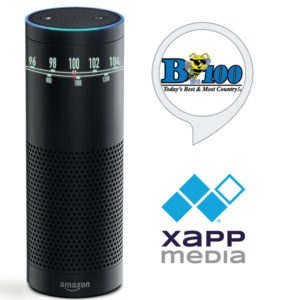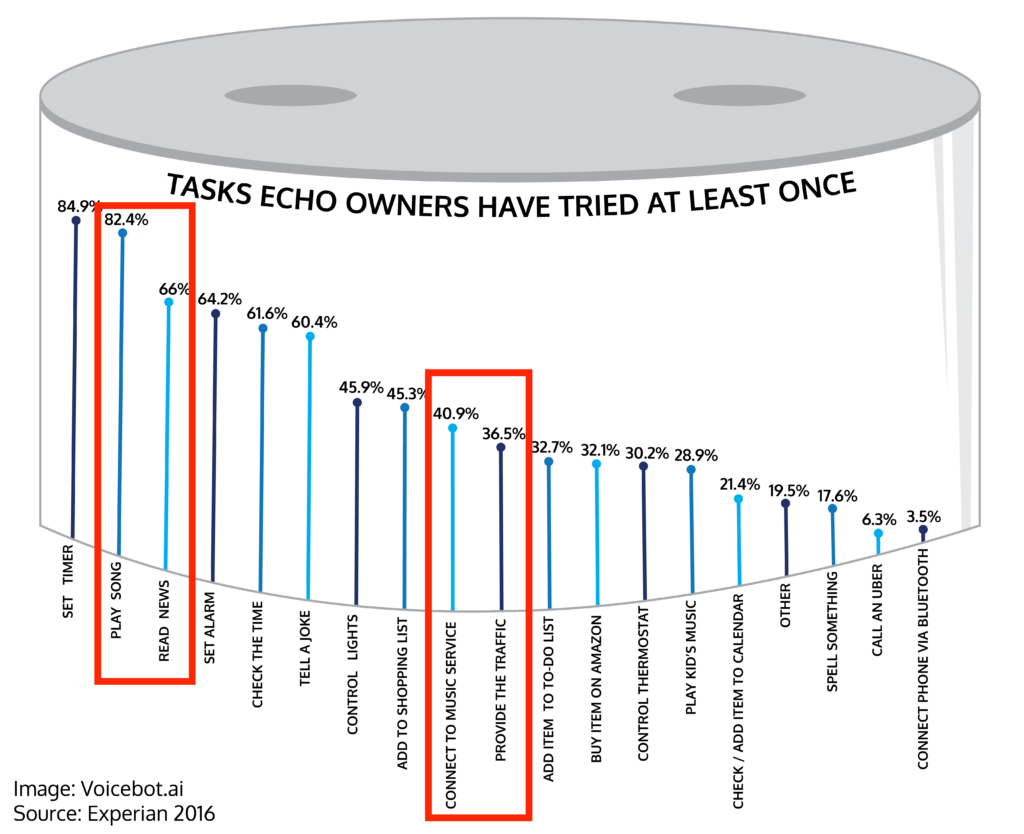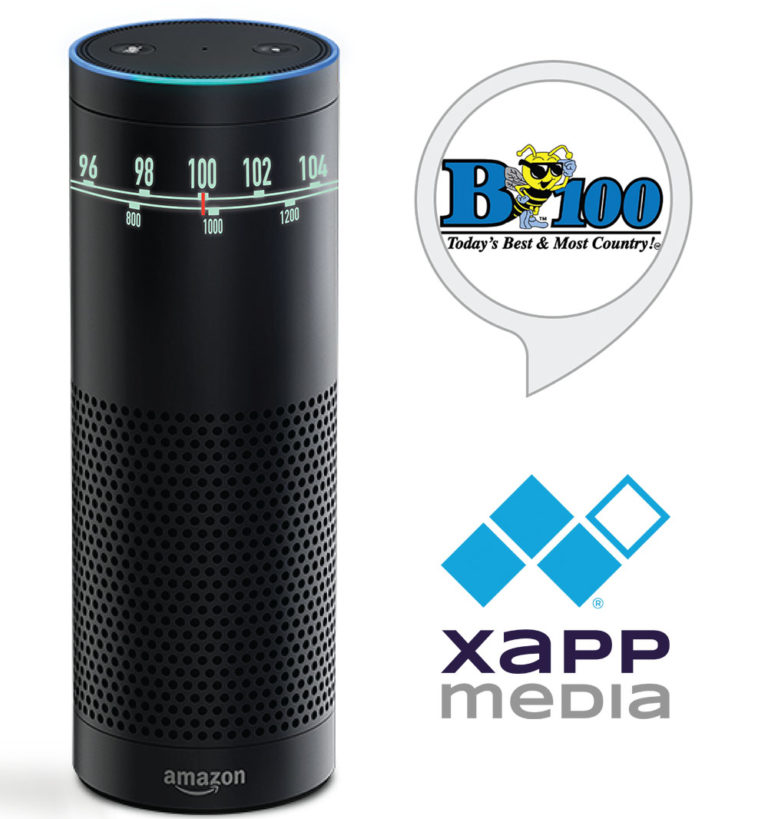XAPPmedia and Federated Media Launch First Amazon Alexa Skill for Radio
XAPPmedia and Federated Media announced today the first Amazon Alexa skill for radio. There are at least a dozen stations with a Flash Briefing for Alexa that provides up to 90 seconds of news for listeners and a few others that play recordings from old radio programs. Many other stations have live simulcasts accessible through TuneIn and iHeart. However, Federated’s B100 country station from South Bend, Indiana appears to be the first full Alexa skill launched by any radio station. Deploying this as a skill instead of a Flash Briefing enables B100 to provide a richer listener experience than a simple live stream. James Derby, chief strategy officer at Federated Media said:
Federated Media is excited to have our listeners access B100 content on whatever device is most convenient for them from wherever they reside. The Amazon Echo, with over ten million people in homes throughout the United States, provides a phenomenal platform for us to share our live radio stream, on-demand custom music channels and podcasts.
XAPPmedia CEO Pat Higbie conducts a video demonstration of the B100 skill.
Live, On Demand, Podcasts and Personality Too
 When you first open the B100 Alexa skill you are presented with three options. You can listen to a simulcast of the live stream, choose from six on-demand music streaming categories or select one of B100’s six podcasts. This turns out to be a unique way for B100 to expose listeners to its many content formats for the first time. For a listener, it provides variety accessed through a single listening channel.
When you first open the B100 Alexa skill you are presented with three options. You can listen to a simulcast of the live stream, choose from six on-demand music streaming categories or select one of B100’s six podcasts. This turns out to be a unique way for B100 to expose listeners to its many content formats for the first time. For a listener, it provides variety accessed through a single listening channel.
Another nice touch is that the introduction to the skill is not Alexa’s voice. It is the voice of an on-air B100 radio personality. That alone makes it welcoming and distinct from so many other skills. However, B100 went one step further. The welcome voice changes throughout the day based on which personality is station host at that time of day. In the afternoon, you will hear Brad King welcome you. But, during morning drive time it is Mackey and Miles. That small touch creates continuity between the Alexa skill initiation and the live simulcast.
The Future of Radio?
Nielsen reported last week that radio still reaches 93% of Americans each week. However, we know from other analysis that despite its reach, radio listening time has declined over the past decade. Audio consumption has risen over that time and changed dramatically. Time spent with streaming music on mobile devices and podcasts has created net new listening time, but has also displaced traditional radio listening. That has also led to less radio listening in the home. XAPPmedia’s CEO Pat Higbie addressed this situation directly in saying, “Alexa provides a new opportunity for broadcasters to bring radio back into the home and make radio an interactive listening experience for the first time.”
Radio once occupied a central space in American homes and created a shared listening experience. Mobile devices and the rise of personalized listening changed that dynamic. The voice-first devices like Amazon Echo and Google Home are bringing audio back into shared spaces again. A 2016 survey by Experian revealed that over 80% of Amazon Echo owners had used the devices to play music, 66% to access the news, 41% to connect to a music service and 36% to hear the traffic. These are all traditional radio use cases. The question has been what can radio do to become relevant in an interactive voice and audio model.

Beyond Simulcast to Interactive Radio
When asked why a station should launch an Alexa skill as opposed to just going for a simulcast through a radio aggregator such as TuneIn, Higbie commented,
It is critical for radio stations to have a presence on Alexa and other voice assistants that allow them to control the experience. Sure, you can have your live signal re-broadcast alongside several thousand other stations, but that doesn’t offer differentiation. By launching an Alexa skill for your station, you can tailor a listening experience to your audience and at the same time expose them to your full array of audio content. An Alexa skill like B100 enables broadcasters to promote podcast discovery, expose listeners to on demand programs and create direct interactivity with their audience for the first time. It’s a tremendous opportunity for radio.
Amazon Echo represents the beginning of the voice web. When you think about it that way, consider that many products are available for sale on Amazon.com, but those brands still need to have their own web pages. Radio stations need to have their own Alexa skills for the same reason.
You can activate the B100 Alexa skill by saying, “Alexa, enable B100.”









